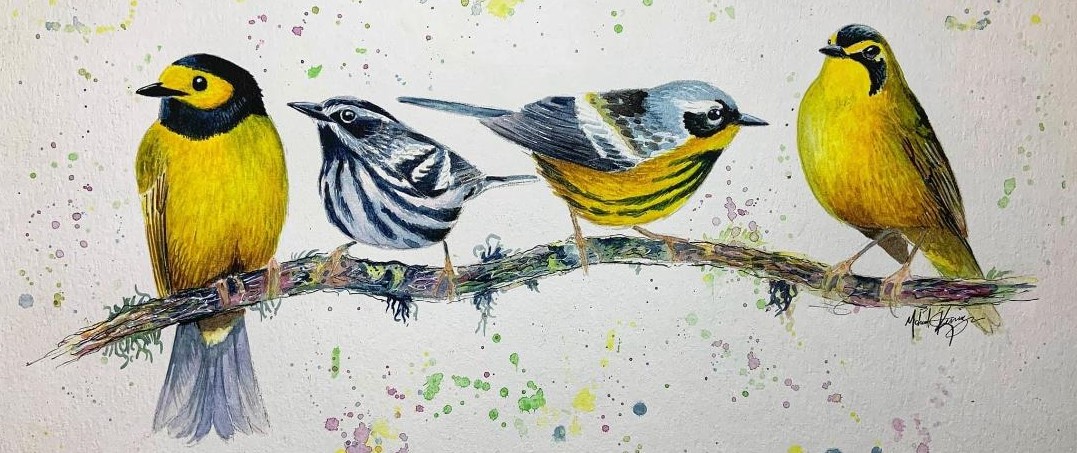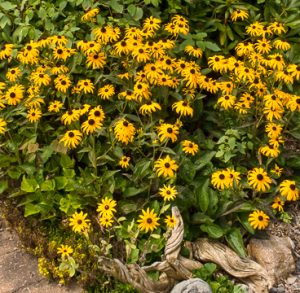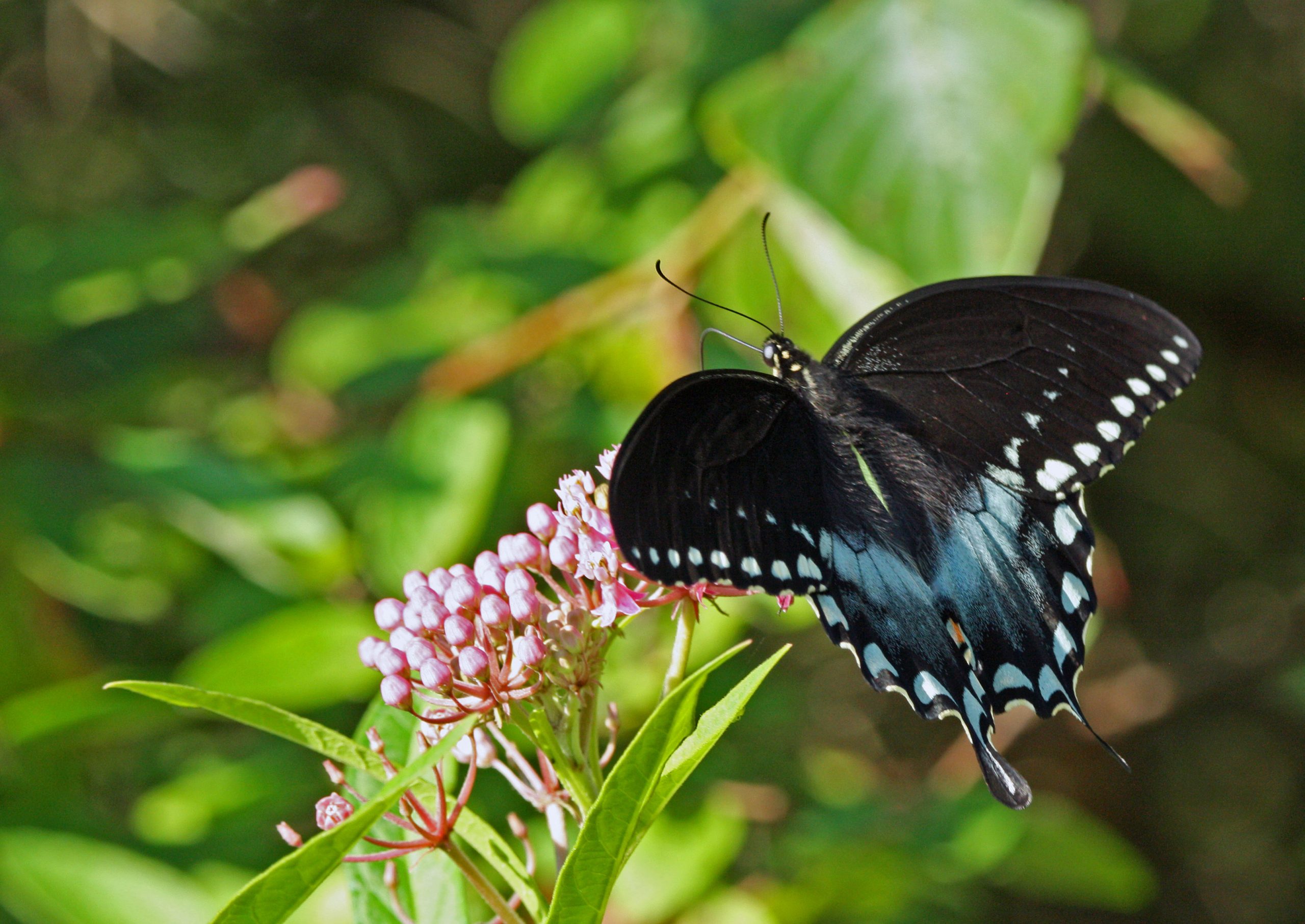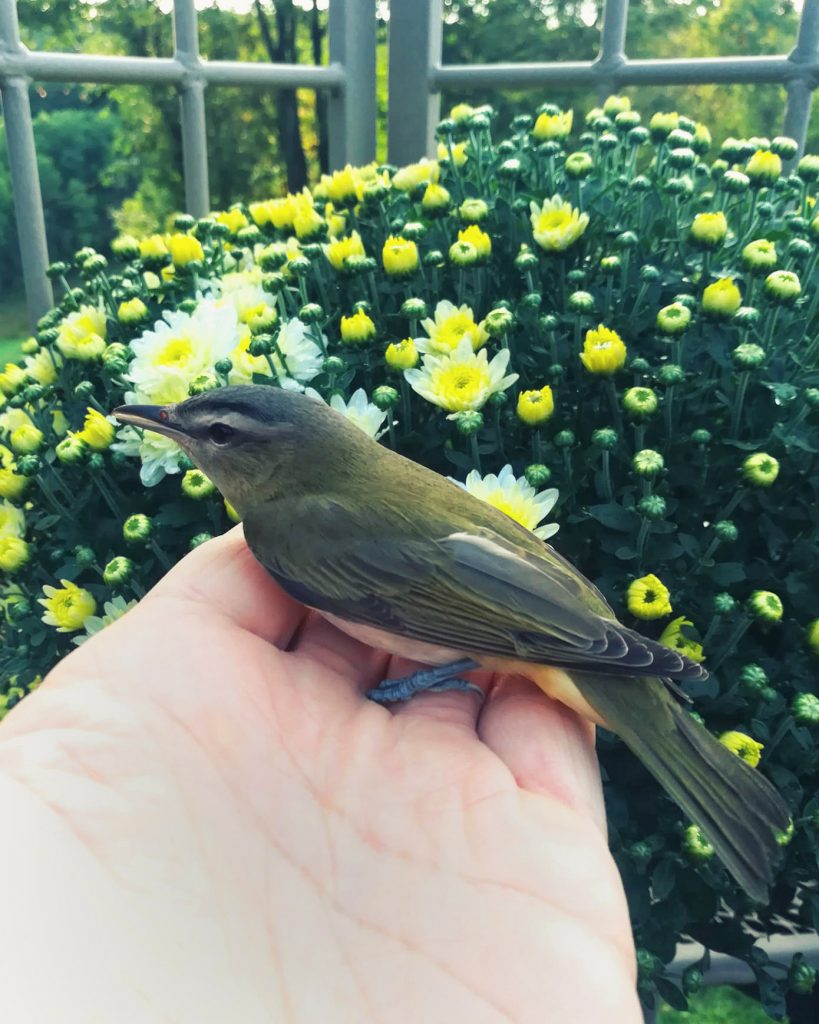After suspending field trips last year because of COVID-19, we have cautiously reinstated them, along with our first, tentative in-person program meeting in October at the Bellwood library. As it says in the latest issue of The Gnatcatcher, this latter event is subject to change. If you would like to be notified about that, and we don't already have your email on our mailing list, let us know at [email protected]. For the field trips, we ask that you wear a mask if you're unvaccinated, and please follow any other CDC/PA guidelines that may be in effect.
Count birds to support conservation and education at the Earth Week Birding Classic
The Earth Week Birding Classic will be held from April 15 to 25, 2021. Registration is free. The goal is for teams in seven different categories to count as many species of birds as possible over a 24-hour period any time during the week beginning on Apr 15 at noon and ending at noon on April 25. This non-profit event is co-sponsored by the Environmental Studies program at Penn State Altoona and Juniata Valley Audubon Society. Pledges that team members garner will support bird conservation and education in central Pennsylvania. Teams of 3 or more (2 or more for Senior citizens) will count birds in Blair and surrounding counties, and prizes will be awarded during the closing ceremony on Zoom immediately following the event. Registration deadline is April 11. For more information, please contact Catherine Farr at [email protected].
INSTRUCTIONS
Please fill out this form and submit electronically to Catherine Farr, [email protected] or print and mail to her at: 6435 State Route 42, Unityville, PA 17774
RULES & GUIDELINES
Date and Time. Tallying of species may commence at 12:00 PM on April 15 and concludes at 11:59:59:59 AM on April 25. Teams may tally during any 24-hour period beginning at any time prior to 12 PM on April 25. Teams pick a start day and time when they register; they may change this no later than April 11th, the deadline for registration. Pre-registration is required, and free.
The closing event will occur on the Zoom beginning at 1:00 PM on April 25. An email link will be provided to teams at the time of registration. Please contact the organizer, Catherine Farr ([email protected])
All teams competing for prizes must arrive and submit their checklists and pledge forms no later than 1:30 PM (otherwise, submit electronically to the organizers by the end of the day). Winners will be announced, and prizes awarded at 2:00 PM. Prizes will be mailed to team captains. Please note that certain species may require additional documentation to be considered valid (see Checklist). This may mean a descriptive species report, and if possible, photo evidence or sound recording.
Teams are HIGHLY ENCOURAGED but not required to utilize eBird to report their records. They may do this on their phones as they go from place to place, and data can be temporarily hidden if desired (though checking others’ eBird lists is not allowed during the event). For this reason, it is necessary to keep track of numbers of individual birds seen for each species.
Count Area: The geographic area covered by this Birding Classic is Blair County and all counties that border it: Centre, Clearfield, Cambria, Bedford, and Huntingdon. All wild bird species recorded from within the county borders are valid. Counters, as well as birds, must be physically located within one of the counties. It is helpful to have a smartphone to track exact location, in case your team is at the edge of the count area.
Count area for Penn State Altoona campuses: a separate map will be provided to teams covering only the campuses, which include all contiguous (connected) land owned by Penn State on the Ivyside Campus and on the Downtown Campus, as well as in the Seminar Forest. Teams restricting their counting to the campuses can only count birds seen from within the physical boundaries of the campuses, but these may include species perched or flying outside campuses. Teams may not count birds seen when teams are travelling between campuses. Study maps are available at http://www.altoona.psu.edu/aboutus/maps.php.
Team Categories: Prizes will be awarded to the highest number of species counted and verified in each category. Teams can compete in only one category other than Ruffed Grouse, which they are automatically entered to win (teams can choose to enter ONLY Ruffed Grouse category, if they wish—see below).
- COOT. Senior Citizens (65 and over) only
- OSPREY. Penn State students only
- TOWHEE. Limited to a single county
- MALLARD. Limited to the grounds of Penn State Altoona, including the Seminar Forest
- PIPIT. On foot only – team members may not use any other form of transportation while counting
- PHOEBE. Families only. Must include at least one adult.
- RUFFED GROUSE. Most species recorded anywhere in the region; winner receives Grand Prize for the Classic
All teams must register for one category only and can win only one category.
If the team winning the RUFFED GROUSE grand prize was registered for another category, the prize for its originally registered category will go to the second place team registered in that category.
A team registered originally only in the RUFFED GROUSE category that does NOT win that category will not be considered eligible to win another category. Strategically, then, COOTs and OSPREYs, who are not limited to a single county, should register for these categories to be automatically considered for the RUFFED GROUSE prize as well, and not the other way around.
All teams must stay together at all times (within earshot and sight of each other) during the 24-hour period or during the periods that they are counting species (breaks may be taken for sleep or other non-Classic activities, and participants may go to different locations before meeting again later). No species may be counted or scouted during any off periods when the team splits up. If the team does not split up, then all species encountered during the 24-hour period can be counted. Teams may count for as little time or as much time as they wish within their chosen 24-hour period.
The original conformation of the team (at the start of the 24-hour period) is the only one valid for counting species, unless members leave the team and do not rejoin, and the team number stays above the required minimum. Thus, NEW members may not join the team after the beginning of the event, BUT the team remains valid if its numbers are reduced during the course of the Classic, down to the minimum of two or three members.
Teams must consist of at least three members, of any age (except the COOTS and PHOEBES; see below). 75% of team members must ID each species. With three members, all three must ID each species for that species to count, though not necessarily at the same time during the 24-hour period. With four members, 3 of the four must record each species for it to be valid; for 5 members, four must ID; etc.
COOT category: Seniors teams may have two or more members. All members must be 65 years of age or older by the 15th of April. 75% or more of members must ID all species, as above. Coots may bird anywhere in the 6-county area.
OSPREY category: Must consist only of Penn State students, who must be currently enrolled full-time at any campus, including World Campus. Ospreys may bird anywhere in the 6-county area.
MALLARD category: the campus teams can be comprised of anyone, not just students.
PIPIT category: for the on-foot teams, no non-foot (or non-wheelchair) transportation may be used at all during the counting period/s. This includes horse, bicycle, canoe, etc. If the team breaks up for non-Classic activities, members must return to the exact spot they ended at before the break, and begin counting on foot from that spot. Pipits may bird anywhere in the 6-county area.
TOWHEE category: for the single-county teams, any county in the Count Area is valid. All birds recorded in or from the chosen county are valid.
PHOEBE category: At least one family member must be an adult (18 or over) and at least one family member must be a child (under 18). Phoebes may bird anywhere in the 6-county area.
ETHICS: Please follow the American Birding Association’s Code of Ethics if in doubt. In general, do not unduly disturb birds, though “pishing” is allowed. No playing of tape to coax out birds is allowed, though calls may be identified using online resources. Calling for owls or other birds using solely team member’s vocal chords is allowed.
DO NOT enter private property except with explicit permission. Birds on private property seen from public rights-of-way are valid.
Be very careful on highways; use flashers if necessary, and do not block traffic.
DETECTION
Birds must be seen or heard to be considered valid.
Domestic species do not count.
It is not permissible during the count period to solicit information on species locations from non-team members.
It is not permissible to track others’ records on eBird, or to access rare bird alerts or other means of finding out where species have been found. This should be done only during scouting periods prior to the 10-day Classic event, and may be done up until just prior to the start of the event at noon on April 15.
It is not permissible to scout for birds during the night rest period (if the group takes one) or any other non-counting break during the 24-hour counting period, and it is not allowable to count birds recorded during that period (an owl, for example), unless the group has stayed together as per the rules.
PLEDGES
It is expected that teams will garner as many pledges as possible to make this event a success. Pledges are a flat rate. Event organizers, in coordination with Team Captains, will follow up with each pledged donor after the event is concluded, so be sure to include correct information so that organizers may contact the donors. All money pledged will go to support bird conservation and bird education in central Pennsylvania.
Validity of Reports
Contestants accept, on the registration form, that the judges of the Classic may rule impartially on species reports that require validation, and that they are fully qualified to do so. This will be done after checklists are turned in and prior to deciding of winners, in the case that decisions on validity would affect the outcome.
The judges pick the species that require further validation, based on accumulated frequency data and other data in eBird. It is necessary to fill out a Rare Bird Report for each record and to have these reports prepared prior to turning in the checklist. Accompanying documentation such as digital photos can be shown to the organizers.
Tip for Beginners
While we highly encourage birders with little experience to take part in this Classic, we urge them to consult with organizers ahead of time if they are unclear about the basics of eBird that will allow them to have a good idea of species to expect in certain habitats. We have no way of checking misidentification of common species not needing validation, so we hope that first-time birders will be slow and careful in their identifications.
CALLING ALL CHRISTMAS BIRD COUNTERS: Saturday, Dec. 19, 2020
The JVAS Blair County Christmas Bird Count (CBC), centered on Culp, will be held on Saturday, December 19, 2020 with a Tally Count to be held via Zoom on Tuesday, Dec. 22. All are invited to attend the Zoom tally – even if you aren’t a counter. Details here.
Sign up soon to be a counter! Call or email Laura Jackson by Wednesday, Dec. 2, 2020. Phone: 814-652-9268 Email: [email protected] or email John Carter: [email protected]
Participation is free, but you must count within the established circle, which is located within 7.5 miles of Culp in Sinking Valley. If you live inside the circle, you could count birds at your feeder and on your property, but please sign up so we know your property is covered. Counters will receive a map, a species checklist, and pointers on any hotspots that might be in your part of the circle. We hope you will spend most of the day counting birds in your area of the circle or observing the birds at your feeder if you live in the circle.
Download the Culp Circle map [PDF], and/or find the count circle on National Audubon's interactive map by searching for "Culp, Tyrone Twp, PA, USA".
If you have a favorite part of the circle, then don’t wait to call as the “early birders” get first pick of the count area. Below are the historic count areas, but anyone who lives in the circle can cover their property, just be sure to sign up so we don’t overlap count areas.
- Northern Altoona
- Sinking Valley
- Bellwood
- Canoe Creek State Park
- Tyrone-Tipton
- Canoe Valley
- Park Forest/Watts Road
- Tyrone Treatment Plant
- Brush Mountain (NE end)
- Juniata River Corridor
There are 3 other Christmas Bird Counts that need counters:
Bedford County CBC is on Saturday, January 2, 2021 and is centered at Manns Choice, Pa. Contact compilers Mike & Laura Jackson: 814-652-9268 or [email protected]
Huntingdon County CBC is on Sunday, December 20 and is centered at Donation, Pa. If you’d like to help, contact compiler Deb Grove: 814-643-3295 or [email protected]
Raystown CBC: Historically occurs near the end of December. If you’d like to help, contact compiler Jon Kauffman: [email protected]
Juniata Valley Audubon Society Zoom Programs
The JVAS Board has decided that we want all of our members to stay safe during these Covid-19 uncertain times. Because we care about your health and safety, and because we want our members to feel connected, we are offering virtual meetings this fall via Zoom.
Before joining a Zoom meeting on a computer or mobile device, you can download the FREE Zoom app from the Download Center (https://zoom.us/download). Otherwise, you will be prompted to download and install Zoom when you click a join link.
You can also join a test meeting (https://zoom.us/test) to familiarize yourself with Zoom.
JVAS Fall General Meetings via Zoom:
When: Tuesday Sept. 15, 2020 at 7pm
When: Tuesday Oct. 20, 2020 at 7 pm
When: Tuesday Nov. 17, 2020 at 7pm
When: Tuesday Dec. 22, 2020 at 7 pm
See the Events listings for information about the programs.
To join any one of these meetings, follow these instructions:
Try to log in about 5 to 10 minutes before 7:00 pm.
- To join by computer, use this link:
https://psu.zoom.us/j/97418229426 - To join from the Zoom app on a smartphone: enter this meeting ID:
974 1822 9426
Passcode is: 123456 - To join by phone, call this number: +1 301 715 8592 (US Toll)
Enter the meeting ID followed by the pound sign.
974 1822 9426
Passcode is 123456
All scheduled events canceled
Everything for JVAS is canceled through June. This means no newsletter, no classic, to general meetings or elections.
If we can meet in July to have a board meeting we will. Otherwise we will wait until August.
Thank you and stay safe.
Catie Farr, JVAS President
Spring Banquet Canceled
Due to the Cornonavirus pandemic, we have been forced to cancel our annual banquet. If you've already signed up, Laura Jackson will be returning your registration fee shortly.
Our other events in March and April have also been cancelled, with the exception (so far) of the Earth Week Birding Classic, which may still go ahead in some form if social distancing protocols can be maintained. Check back here for updates. And don't stop going outside! As the Associate Editor of Audubon magazine, Andy McGlashen, recently pointed out, Birding Is the Perfect Activity While Practicing Social Distancing.
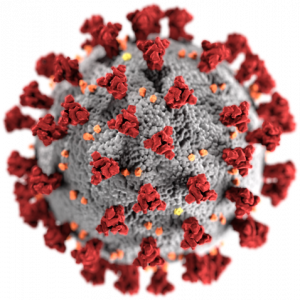
April Field Trips Canceled
The Juniata Valley Audubon Society is cancelling our upcoming field trips in April. This includes the Greenwood Furnace Adventure on April 4 and the Trillium Hike on April 18.
We feel this is necessary for the safety of our membership and the general public with regards to the coronavirus pandemic.
Please check the JVAS website for future updates.
~ Susan Braun, Field Trips Chair
